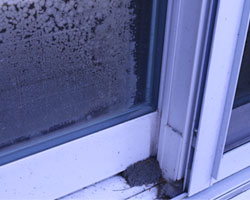The Guide to Detecting Air Leaks in the Home
Drafty windows are one of the root causes of high energy bills and inconsistent indoor temperatures, allowing up to 30% of heat to escape your home.
Air infiltration is the introduction of outside air that flows into your home, and one of its entry points is through inefficient windows.
This leads to your HVAC system working in overdrive, as your energy bills steadily increase throughout the seasons.
Unfortunately, even new exterior products can cause drafts if they’re poorly installed. When you think that you feel a draft in your home, here are the steps that you can take to discover its source:
Option 1: The Hand Test
Sometimes all you need is the touch of a hand to detect air leaks in the home.
The first air leak detection test is to place your hand around the cracks of your windows and doors—but this must be done on a cold day.
This test also works best for detecting large air leaks.
While your hand is placed over the cracks, pay close attention and notice if you feel cold air making its way inside. If you feel drafts of cold air on your hands, you likely have an air leak.
Option 2: The Incense Stick Test
The incense stick test is a classic test that’s recommended by Energy.gov for detecting air leaks. For best results, conduct this test on a cool and windy day.
The first step to take is to turn off all combustion appliances, such as your water heater.
Shut all your windows and exterior doors, and close the vents.
Next, use a large box window fan and your bathroom fan to suck air out of the house.
These steps will help increase air infiltration and make leaks easier to detect.
After you’ve followed these steps, light an incense stick and hold it near common air leakage sources, such as the windowsills. If the smoke moves, you likely have an air leak.
Option 3: Electronic Air Leak Detector

One of the last ways to detect air leaks is by using an electronic air leak detector. They can detect a variety of leaks, including pressure, vacuum, and gas.
You simply put the device near the areas where you suspect any air leaks. If an air leak is detected, the light will turn blue to symbolize cold air.
If the air is warm, it will turn red. The light will not change if no air leaks are detected.
Minimize Air Leaks with New Windows from Universal Windows Direct
If your windows are leaking air and you’re sick of paying high utility bills, contact us today for a free estimate.
